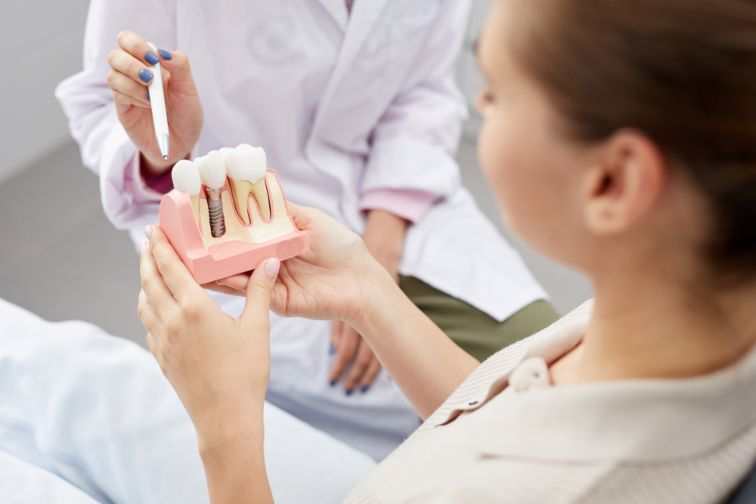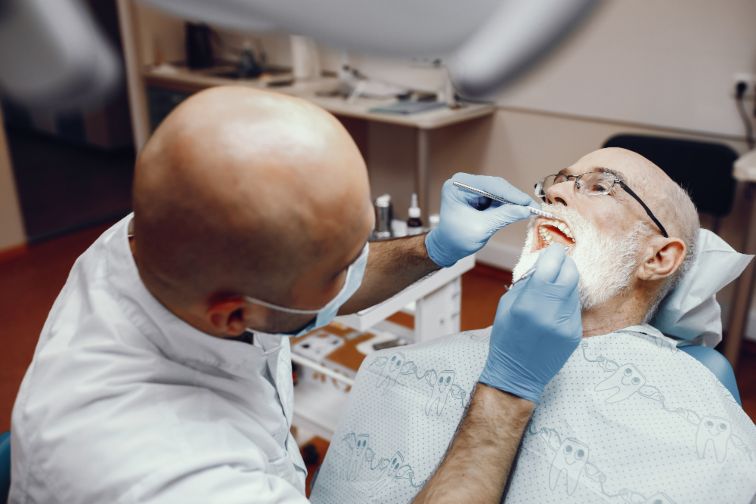Dental bone grafting is the procedure of adding strength and volume to your jawbone. Dental grafts are usually done when there is bone loss caused by missing teeth or gum disease, or if more bone density is needed for a dental implant. Dental bone grafts can be differentiated by the source of bone used for grafting:

People who need dental implants because of missing teeth commonly need dental bone grafting. Grafting is done to increase bone density and provide more support for the implant. If the bone density is insufficient, the implant will start to move and maybe even fall out because of the constant pressure when chewing.
People whose appearance has been affected by bone loss also need dental bone grafts. Loss of bone mass in the jaw causes the face to look different than it used to, often shorter. The lips and muscles around them can also change in appearance if the jawbone changes its shape. Bone loss in the jaw occurs more often among older adults because the risk of developing a bone-thinning condition (osteoporosis) increases as you get older.
Losing a tooth can also cause bone loss. The alveolar bone supports and holds your teeth, and when one or more teeth are missing, the alveolar bone starts to atrophy from lack of work. Alveolar bone loss can quickly lead to jawbone loss because the jawbone is strengthened every time you chew.
People with gum disease can also benefit from dental bone grafts because it also affects bone density. Bone grafts stabilize the jaw and gum tissue, preventing further bone loss from gum disease.
If your upper back teeth are missing, you may need a sinus lift. The maxillary sinuses are just above the upper back teeth and can drop down and occupy the space that the missing teeth roots once occupied. If this happens, you wouldn’t want dental implants because they would penetrate the sinus membrane. This condition is treated by a sinus lift. This procedure involves raising the sinuses back to their original position and placing a dental bone graft underneath the sinus for support and a solid foundation for later dental implants.
If a serious jaw injury has occurred as a result of an accident or other physical trauma, a block bone graft is needed. This type of graft involves holding a large block of bone from the back of the jaw with titanium screws until it bonds with the surrounding bone tissue.
This is the most common type of bone graft. Its purpose is to protect the alveolar bone and prevent it from deteriorating. A new bone is placed directly into the socket where a tooth has fallen out or been removed. This creates a solid foundation for a dental implant and stabilizes the socket as the area heals. It takes about 4-6 months for this type of graft to heal and bond with the surrounding bone tissue. After the graft has healed a dental implant can be done.
In cases when the jaw isn’t wide enough to fit implants, a lateral ridge graft is needed. The width of the jaw is increased making room for dental implants.

The first thing a dentist will do is examine the health of your teeth, gums, and jaw, then perform a dental X-ray scan to determine the extent of bone loss. After the health assessment, your dentist will discuss what treatment options are possible, and which one will be the best for your needs.
At the beginning of the surgery, the part of your mouth where the bone will be grafted is numbed with a local anesthetic. A small incision is made in your gums, and the gums are moved back enough to make the jawbone visible. After disinfecting and cleaning the area of the incision, the bone graft will be put into place, and in many cases, it will be covered in a membrane to be more secure. After putting in the graft and membrane, the gum tissue is put back into place and is closed with stitches.
The first few days after the surgery, pain, swelling, and bruising will probably occur. These postoperative symptoms can be managed with pain relievers, and your dentist may also prescribe antibiotics to stop any infections that may happen while the gums heal. While chewing, you may notice some bone fragments coming out of the area where the bone was grafted for the first few days. This usually isn’t a need for concern, but be sure to call your dentist to make sure that the healing process is going as expected.
After the first few weeks, you will probably feel normal. However, the bone healing process can last 3-9 months, depending on the specifics of your situation, such as the type of graft, the area in which the graft was placed and your body's ability to heal.
Pain and swelling are the most common side effects of a dental bone graft. These can be dealt with very easily, with the help of ice packs and over-the-counter pain relievers. The other side effects can be difficulty when chewing and minor bleeding. Infection can be a serious concern after surgery, and when prescribed it is necessary to take the full course of antibiotics. Other uncommon side effects are:

